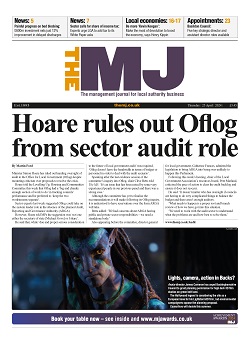The fight against a global pandemic as dangerous and infectious as COVID-19 requires international co-operation on a truly global scale. Yet alongside this, we know it is most effectively delivered when combined with responses at the most local level, working from the ground upwards.
My belief is that the UK’s campaign against coronavirus has been most effective when we have joined together the best of what we can deliver nationally with what needs to be delivered locally, and also where local organisations have come together as systems with the freedom to devise their own responses, albeit set within national standards.
This combines our significant national capabilities with the unique and critical asset of local knowledge and experience of relationships, resources and requirements. These only exist in localities.
This was why I was keen to play a part in designing the new Greater Manchester (GM) health and social care situation reporting framework. It is based on the NHS’s OPEL (Operational Pressures Escalation Levels) and rates the pressures on our care homes. It is a critical tool in Greater Manchester’s fight against COVID-19.
It enables the city region’s 10 local authorities to share information daily on which care homes are reporting problems so that other parts of the system can provide assistance and bridge the gaps. Part of the reason for doing this is to come together as a local resilience forum (LRF) at a GM-wide level as well as being a devolved health and care system.
The new approach has been especially useful in dealing with the issues that have dominated the headlines as the lockdown has progressed: testing, deaths and infections in care homes, and the acquisition and distribution of personal protective equipment (PPE).
A range of data is being taken across the entire system. It immediately makes apparent which organisations are facing the greatest challenges, allowing us to get mutual help to them.
This major and significant advance is testament to the work of our 10 directors and the devolved GM Health and Care Partnership team. It gives us access to up-to-date information on what is happening in care homes, providing the coherent data that had previously been so badly lacking. It shows up variation in areas such as infection control and provides a direct link back to our clinical pathways.
Reporting is based on a simple and consistent approach to capturing key data. The outputs have to inform clear situation reporting (sitreps) and trigger the appropriate actions to curb further escalation by supporting operational and clinical responses to ensure safety and continuation.
A key list of metrics has been developed to encompass monitoring of pressure points, which both directly and indirectly assist the process. This considers both local requirements and the GM minimum dataset required to effectively operate the OPEL process.
The consensus is that the best way to collect this data is for each locality to submit the required information based on the outputs of their individual discussions or sitreps with providers. Consistency with the agreed GM specification is vital.
During a fast-moving crisis it is important to be able to state data requirements in accordance with changing needs as bigger, more complex national systems can be slow to respond.
The various directors of adult social care are rolling this out across GM, starting with an initial focus on care homes but quickly moving to other settings such as home care, reablement, intermediate care and supported living. Similar processes are being put in place for primary care and community services.
We are also working closely with Health Innovation Manchester around a digital offer that will optimise sitrep reporting via a Safe Steps application currently being trialled in my own borough of Tameside. This captures real-time data on residents and their health and wellbeing. The intention is to roll it out across the region.
The sitrep will offer support in considering when recovery plans should come into operation. It will enable a period of transitional funding arrangements to give localities the time to review arrangements, undertake full assessments and determine funding eligibility.
So far, the signs are very encouraging. If we continue to adapt and refine the system I am sure it will continue to benefit us once lockdown ends – and even after the emergency has ended and we return to normal – or as close to it as we can get. It will also make us more resilient in the event of any likely second COVID-19 wave.
If we are going to be successful in using this to build the capacity and resilience we need in our care sector, we must use it not only to direct local resources, but also those critical national capabilities such as the supplies of PPE, the organisation of testing and the targeting of Public Health England support around infection control. This is best deployed when guided by insights from local, real-time, granular systems like these and through the LRF decision-making structures.
Steven Pleasant MBE is chief executive of Tameside MBC and accountable officer of NHS Tameside and Glossop clinical commissioning group (CCG)



